2/2007
A New World Rail Speed Record
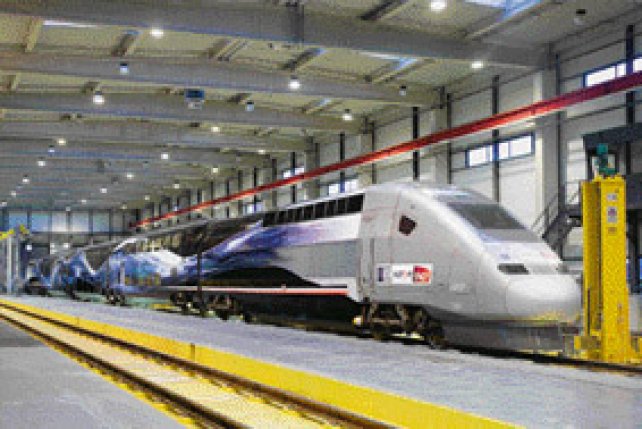
At 13.14 on 3 April 2007 the modified TGV trainset V150 reached a record 574.8 km/h at km 191 on the new LGV Est high speed line in France. This beat by 59.5 km/h the previous world record, also established by a TGV, 17 years earlier.
The record-breaking TGV set at the Technicentre Est Européen (see R 5/06, p. 23) where it was housed during the months of preparations leading up to the run of 3 April.
Photo: ALSTOM
New Yersey Transit's Comet VI Double Deck Carriages
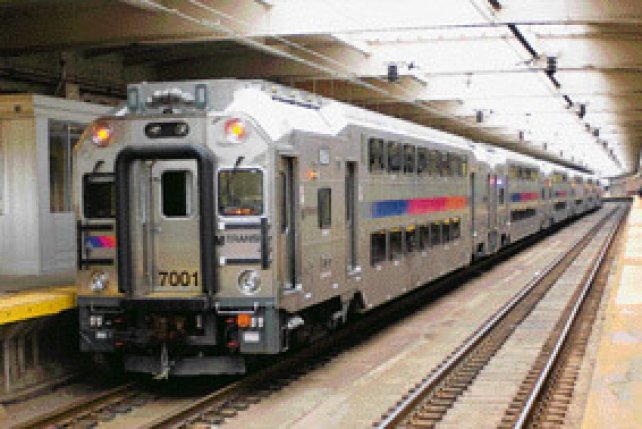
In 2002 and 2005 New Jersey Transit placed orders with Bombardier for a total of 234 Comet VI double deck carriages, to replace most of the ageing Comet 1 and 1Bs built in the early 1970s, and to enable the cascading of the lower-capacity single-deck Comet IV and V stock from the busiest routes on the network. In this article we take an in-depth look at these new vehicles.
A rake of Comet VI stock on a test run at Newark in New Jersey, which has high platforms, on 11 October 2006. This is driving trailer 7001. Note the position of the cab (illuminated) on the right-hand side of the gangway connection.
Photo: NJ TRANSIT/Michael Rosenthal
New Gornergrat Trains
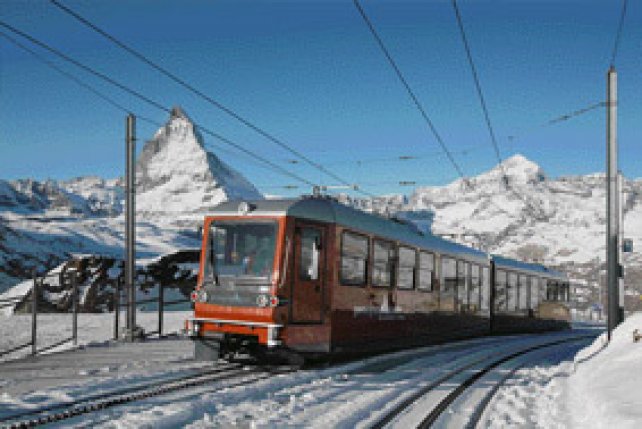
18 December 2006 was a momentous day in Zermatt, the car-free ski resort high in the Swiss Alps. Six separate media events took place...
Unit 3081 at Rotenboden, the last station prior to the summit terminus, on 18 December 2006. The peak in the background needs no introduction.
Photo: Armin Schmutz
China's New Co'Co' Electrics
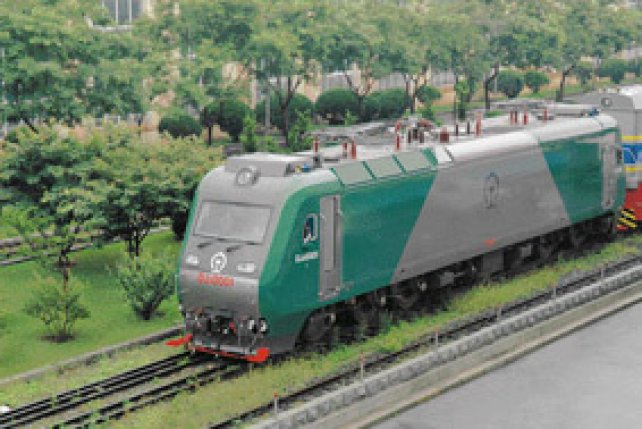
DLoco of Dalian founded in 1899 and now with a current output of around 500 locomotives annually, is building 240 7,200 kW electrics for Chinese Rail-ways, for use on heavy freights moving coal and iron ore from the northeast of the country to the main industrial centres in the southeast. The handing over of the first of the new locomotives to the Chinese Ministry of Railways took place in January 2007.
DJ3-0001 standing outside the Dalian works in June 2006.
Photo: Voith Turbo
TRAXX P 160 DE
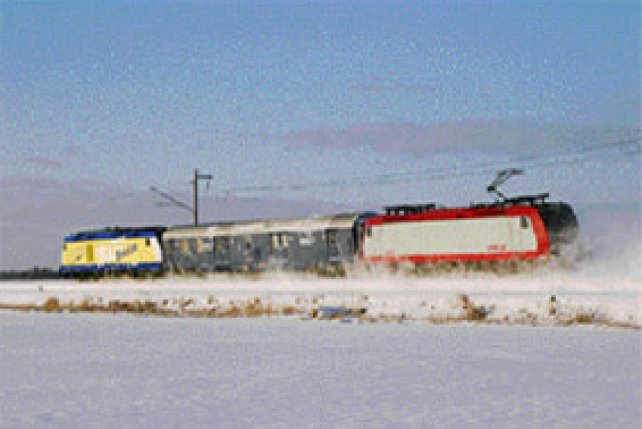
In the beginning there was a vision: to design and build a diesel locomotive within the framework of the existing Bombardier TRAXX family of hitherto only electric locomotives. Even though diesel locomotives have many differences to electrics, with the TRAXX DE they share more in common than most people expect.
On 23 January winter arrived with a vengeance, and the two TRAXX DEs started four days of load tests. VUZ usually hires in CD's Class 743 diesels for this purpose, since they are fitted with electrodynamic brakes, while for higher speeds various types of electric locomotive are used (usually either CD's Class 151 or ZSSK's Class 350). However, these types do not possess sufficient braking power for testing the Class 246s, so another TRAXX was employed instead - CFL's 4015. Here we see 4015 and 246 001 with their support coach sandwiched between them on the large circuit at Cerhenice on 25 January. The following day 4015 and 246 002 departed for Germany, where the TRAXX DE was to start certification testing at Görlitz using a rake of push-pull stock. 246 001 stayed at Cerhenice for further tests, these being completed on 15 February, and it left for Germany the next day.
Photo: Petr Kaderavek
TEPB70BS Progenitors And Production
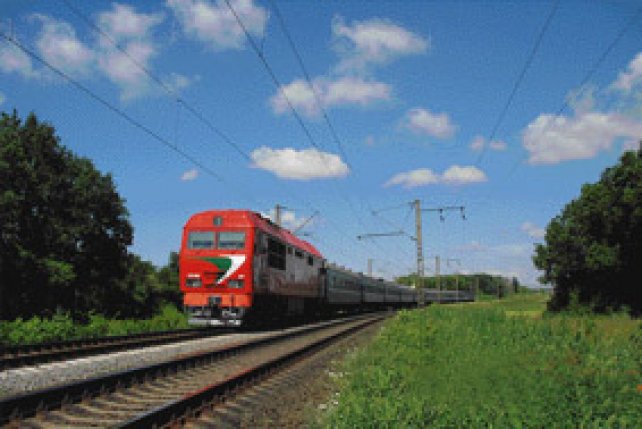
The construction of a prototype Class TEP60 in 1960 heralded the dawn of passenger diesel-electric locomotive production for the Russian railway industry. Over the following years more than 1,500 were built. The prototype 2,942 kW Class TEP70, the successor to the TEP60, was outshopped from the Kolomna works in June 1973. SZD bought a huge number of these machines for passenger work, and production even continued following the break-up of the USSR.
On 23 July 2006 BCh-owned TEP70BS-007, recently outshopped from Kolomna, powers a Minsk to Odessa express between Mikhanovichi and Rudensk in Belarus.
Photo: Viktor Derkach
Taurus Family News
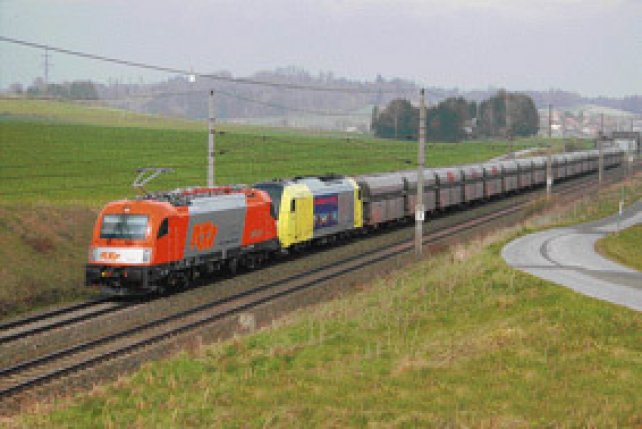
Although Tauruses are becoming ever more common on international trains between Austria and neighbouring countries, they are making headlines in other ways, too.
The first of the pair, 1216 901, entered service in April 2007, and was used on a variety of services, including the twice-weekly movement of blast furnace clinker from the voest Alpine steelworks near Linz to the Holcim cement works at Lorüns, one of the full open access services operated by RTS within Austria. It is seen here on train 47892 near Weng, between Linz and Salzburg, with loaded wagons, on 8 April.
Photo: Kajetan Steiner
And much more!
Cover of 2/2007
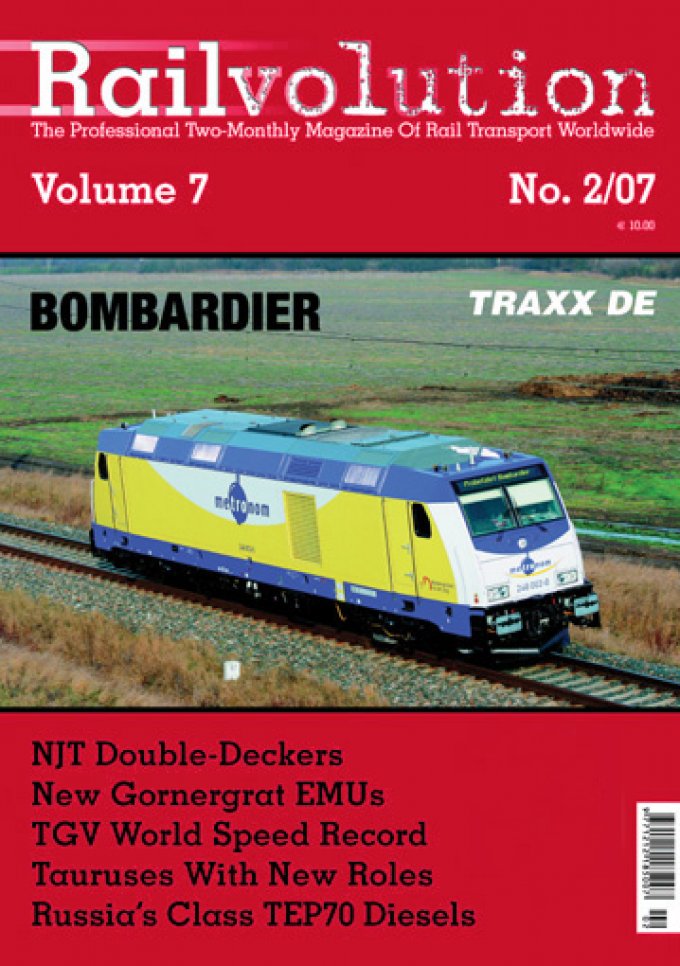
Poster
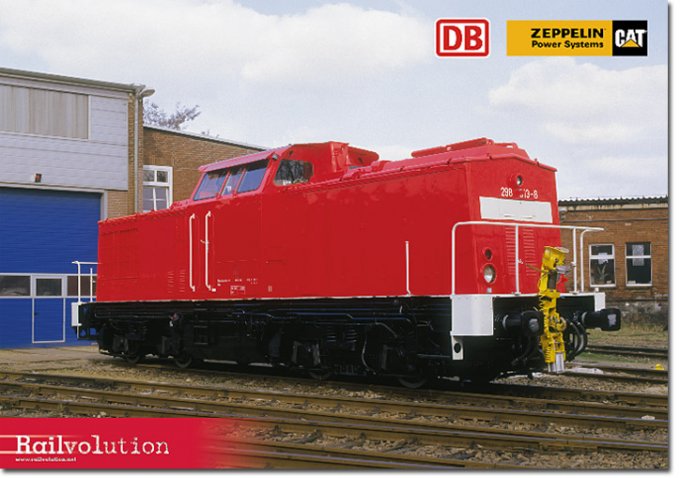
Features: re-engined 298 313 on the turntable at Cottbus works on 15 March 2007, having just come back from a test run.
